TL16RBTHMN
Latest

Fence-climbing robot could be priced within your reach
Four-legged, go-anywhere robots aren't really affordable... not unless you're willing to spend as much as you would on a used car, anyway. Ghost Robotics, however, thinks it can do better. It's working on the Ghost Minitaur, a dog-sized quadruped bot that could cost $1,500 or less when it hits mass production. Its direct-drive electric motors both keep the cost down (since the springiness is dictated by software, not hardware) and let it pull off feats that you don't see in far pricier machines. As Ghost Minitaur can sense contact with objects through the motors themselves, it can not only climb stairs, but scale fences and even open certain kinds of doors. Shades of Jurassic Park's velociraptors, anyone?
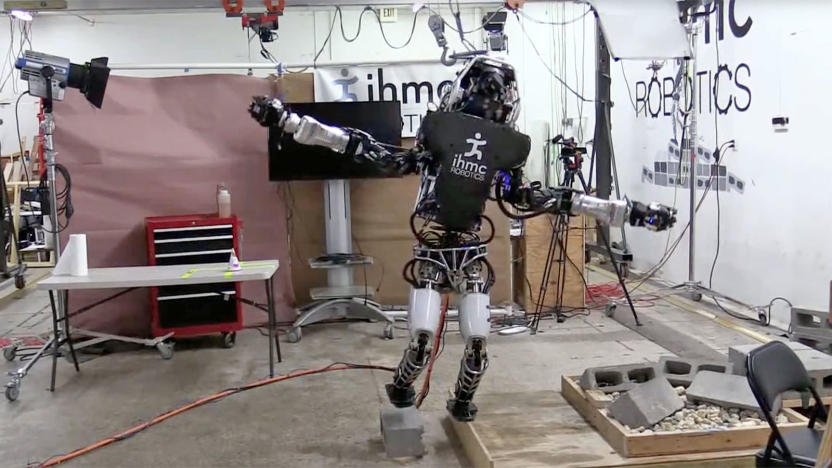
Watch Boston Dynamics' humanoid robot balance on one foot
Humanoid robots still have problems staying upright, especially in tricky situations, but it's evident that they're making some progress. IHMC has posted a video showing Boston Dynamics' Atlas robot balancing on one foot on the edge of a plywood board about 0.8 inches thick. The feat is a "lucky run," IHMC admits (it's rare that the robot stays poised for so long), but it's relatively effortless. The worst you see before the fall is shaking as IHMC's algorithm sometimes makes poor estimates of the robot's state.
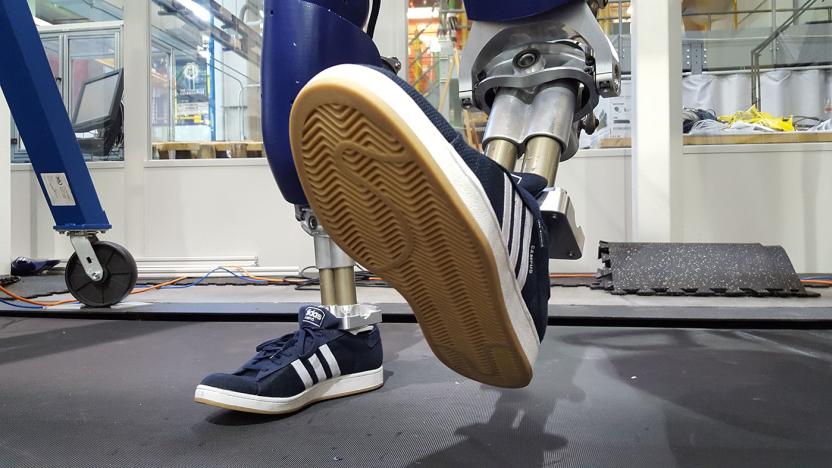
Georgia Tech's DURUS robot has a more natural human-like stride
Last time we saw the DURUS robot walking like a human, it was still doing so relatively flat footed. The folks at Georgia Tech's AMBER-Lab have improved the robot's movements to incorporate even more human-like heel strikes and push-offs. As you can see in the video below, the new range of motion gives DURUS a more natural stride, and the ability to wear some sweet sneakers. Until about a week ago, the robot shuffled along flat footed before getting a pair of new metal feet with arches soles. After some tweaking of the algorithms and a few falls, DURUS now strides like the rest of us.

Amazon robot challenge winner counts on deep learning AI
Amazon's robot Picking Challenge is back for a second year, and it's clear that the competition has learned a lot in that time... in more ways than one. The Netherlands' TU Delft won both parts of the challenge (stowing and picking warehouse items) with a robot that relied on the combination of deep learning artificial intelligence and depth-sensing cameras to get the job done. The machine studied 3D scans of the stockroom items to help it decide how to manipulate items with its gripper and suction cup. That adaptive AI made a big difference, to put it mildly. The arm got a near-flawless score in the stowing half of the event, and was over three times faster at picking objects than last year's champion (100 per hour versus 30).
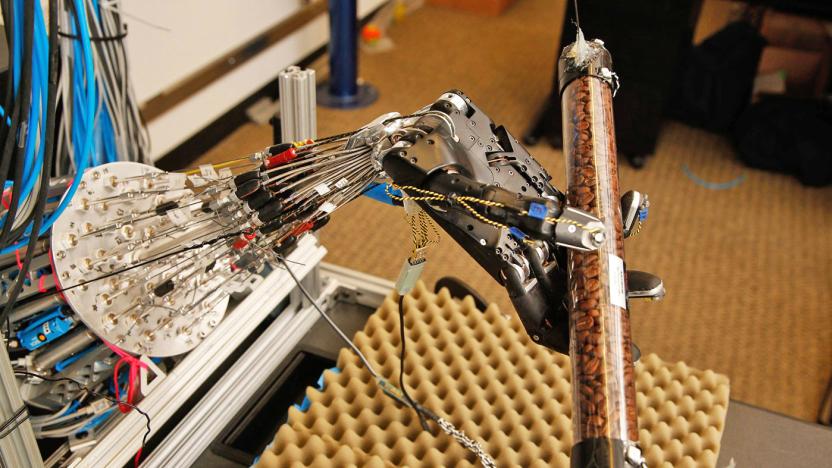
Robot hand learns to twirl objects on its own
Robots can (usually) walk or roll around just fine, but hand control has often proven elusive: it's hard to give them the same kind of finger dexterity as a human. However, University of Washington researchers just got much closer to fulfilling that dream. They've built a robot hand that is not only dextrous enough to spin objects (such as the tube of coffee beans you see above), but learns how to do this on its own. Its algorithm gradually discovers what works and what doesn't -- give it enough time and it'll go from clumsy to reasonably skilled.
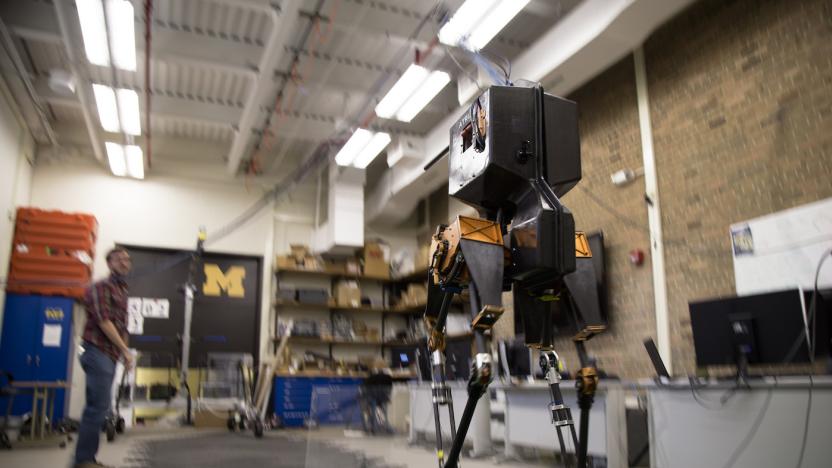
U of M's Marlo robot uses algorithms to conquer uneven terrain
Robots walking unaided on flat ground is tough enough as it is -- just look at last year's class of DARPA Challenge failures -- so when one can handle uneven terrain in any direction (not just a straight line), we take notice. The latest example is Marlo, a joint project between University of Michigan's Jessy Grizzle and Oregon State University's Jonathan Hurst. The key difference here is how it achieves this feat: a bank of algorithms containing different instructions for different walking styles.
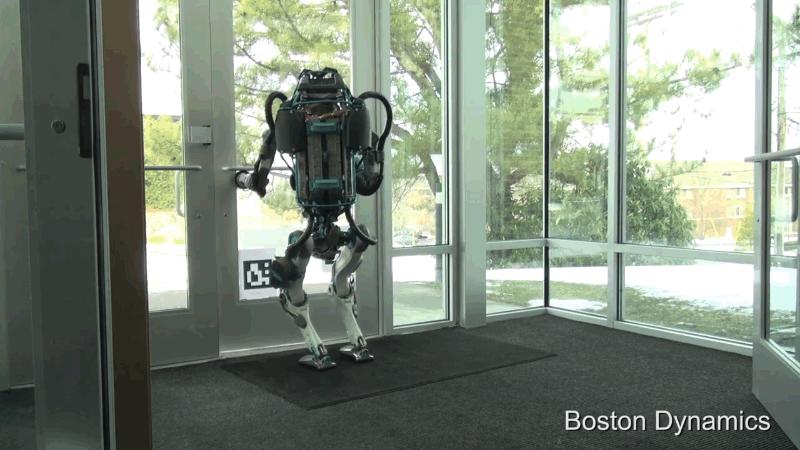
Boston Dynamics presents the 'next generation' Atlas robot
Over the years we've watched in awe as Boston Dynamics has refined the design of its humanoid Atlas robot, and this new version is impressing us once again. Last year the Alphabet-owned group showed off a battery-powered version of the robot, and now the "next generation" model remains wireless, but is smaller. Matching my size at 5 feet 9 inches and about 180 pounds, it compares to a predecessor that was six feet tall and weighed 330 pounds a couple of years ago.

Meet the J-Pop 'idol' robot that dances and dresses up just for you
This robot is a better dancer than half of the Japanese pop idol groups it's trying to emulate. While we're not going to torture ourselves (or you) by deep-diving into the curious phenomenon of Japanese idol units, but these robots were designed for (more often than not, male) fans looking to have a performer that, according to IT Media Lab: "dances especially for me" and those that wanted to create "their own performance stage in their home." Ahem.

Cute Nao robot exhibits a moment of self-awareness
See that Nao robot waving its hand up there? It's not starting a dance routine: it just had a light-bulb moment, so it's trying to catch a human's attention. Rensselaer Polytechnic Institute professor Selmer Bringsjord programmed the three robots to think that two of them were given a "dumbing pill." In reality, that pill's a button on top of their heads that can be pressed by the tester. When the tester asked the robots which pill they received, their processors crunched data in order to provide the right answer. Since two of them were unable to talk, only one answered out loud. "I don't know," the third robot replied, realizing the truth a short while later.

Meet the faces of Japan's first robot-staffed hotel
Japan's first robot-staffed hotel opens this week and we just got the full tour. While the main attraction may be the bordering-on-human receptionist (left) and the English-speaking dinosaur (er, right), the hotel has a whole family of robots performing varying degrees of useful work. Think: room service and a luggage porter, with one familiar face taking up duties as a bilingual concierge. A deeper dive of the hotel is coming; the robots aren't the only curiosity found inside this hotel. For now, let's meet the bots.





